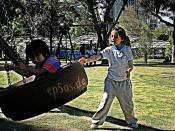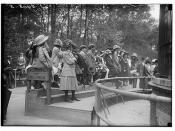Bandura
Albert Bandura proposes that cognitive developmental change occurs mainly through observational learning; where a child learns through imitation, and modelling; where a child learns the behaviour and personality traits of another.
An example of a theory, which explores imitational behaviour, is the social learning theory.
The Social Learning Theory
- Badura argues that people learn from what they see.
- Children will imitate what they see
- His experiment was done with a bobo doll and 3 groups of adults. Each group were videoed beating the doll but each film had a different ending.
- The first group of adults were rewarded for beating the doll. The children who saw this were aggressive when they played with the doll.
- Nothing was said to the 2nd group of adults. The children who saw this were also aggressive when they played with the doll.
- The 3rd group of adults were punished for beating the doll.
The children who saw this were not aggressive towards the doll.
Bandura concluded, that as the children who saw the adults praised acted in a similar manner to the children who saw the adults receive no reaction, while the children who saw the adults punished acted differently, that vicarious punishment is more powerful than vicarious reinforcement.
This influences early years settings today as it has been proven that vicarious punishment is an effective way to encourage correct behaviour. A classroom example of this is making an example of a naughty child by reprimanding them in front of the rest of the group.
This doesn't prove that punishing a child's mistakes will be more helpful to their cognitive development than praising them when they do well.


